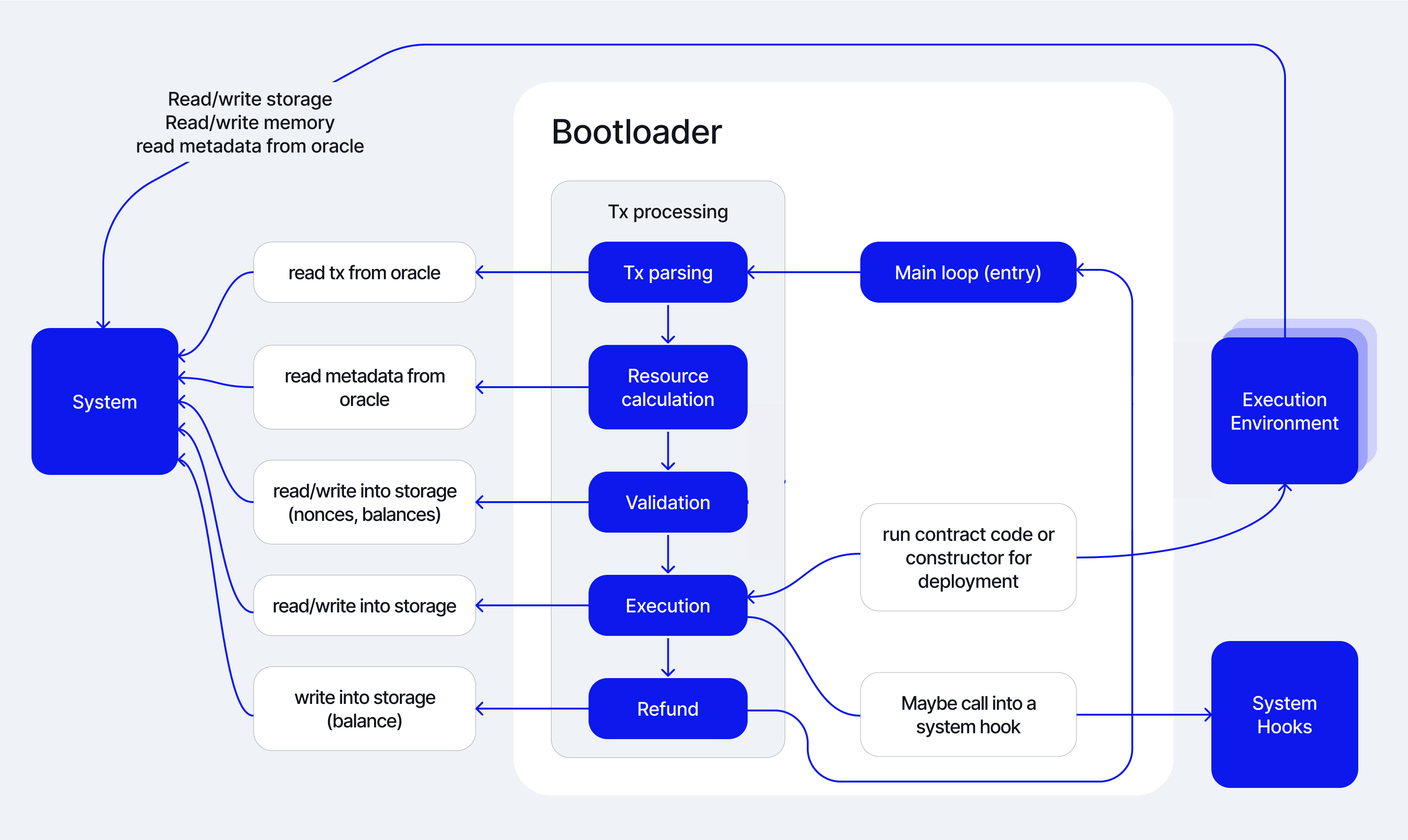Runner Flow
This section describes how the bootloader interacts with the execution environments to run contract code. This section is complemented by Execution Environments.
Entrypoints
The bootloader implements and uses two entrypoints for code execution.
The first one is run_till_completion from
the runner module of the bootloader. This function
implements the main execution loop given an initial request (either external call or deployment), which is explained in the next section.
The second one,
run_single_interaction,
is just a simple wrapper over the previous to simplify external calls from the bootloader. It just adds the logic for starting and finishing the
topmost execution frame and prepares the inputs for run_till_completion.
Runner Structure
The runner's responsibility is to coordinate calls into the execution environments. For this, the runner keeps a callstack of execution environment states and will be responsible of starting and finishing system frames. Frames are used to take snapshots for storage and memory to which the system can revert to in case of a failure.
The runner is implemented as an infinite loop that dispatches the spawn requests returned by the execution environment. As a reminder, these are:
- External call request and
- Deployment request.
The runner breaks out of the infinite loop after processing the completion of the initial request (when the callstack becomes empty).
Call Request
For the external call request, the bootloader needs to:
- Start a frame for call.
- Run the call preparation in the system, this will return the callee's bytecode, transfer token value and charge gas according to the EE's policy.
- Create a new EE state for the call and push it to the callstack.
- Call into the newly created EE to start executing the frame.
There's a special case in which the callee is a special address (for example, precompile or system contract). In this case the flow is similar, but there's no new EE. Instead, the System Hooks are used.
After the first call returns a preemption point, the runner will either recursively handle a new spawn request (for a nested call/deployment) or the completion of the original call.
Deployment Request
For deployment request, the bootloader needs to:
- Start a frame for deployment preparation.
- Call into the EE to run the deployment preparation. This will compute the deployed address, perform some checks and charge gas.
- Create the new EE state for the constructor using the output from the previous call and push it to the callstack.
- Start a frame for the constructor execution.
- Set nonce to 1 (see EIP-161).
- Perform token transfer.
- Call into the newly created EE to start executing the constructor frame.
After the constructor returns a preemption point, the runner will either recursively handle a new spawn request (for a nested call/deployment) or the completion of the constructor. In this last situation, the runner has to:
- If the constructor execution was successful, ask the system to actually deploy the code.
- Finish the constructor frame, reverting if the constructor ended in a revert state.
- Pop the deployer from the callstack.
- Copy return data into the return memory of the deployer.
- Continue execution of the deployer.
Flow diagram
We illustrate the flow of an interaction in which an EOA transaction execution calls a contract that, in turn, deploys a new contract. The
entry point in the following diagram is Run single interaction, which is called by the EOA transaction execution, as described
in Transaction processing.

In this diagram, the dotted lines from the EE to the bootloader are conceptual. In the implementation, the bootloader calls into the EE and handles the return value in the next iteration of the main loop.